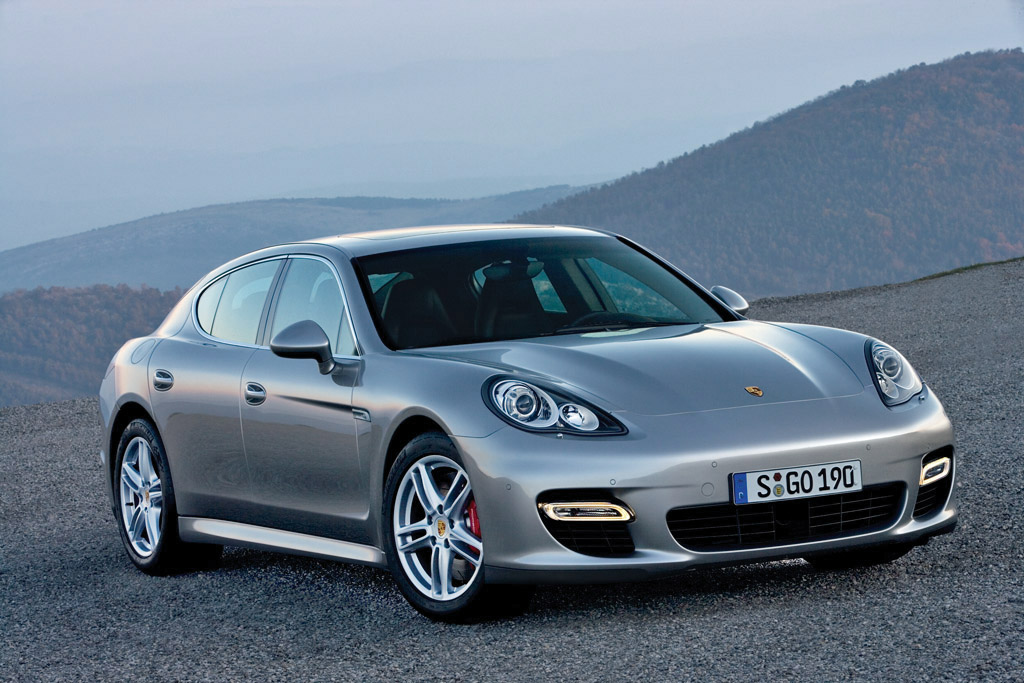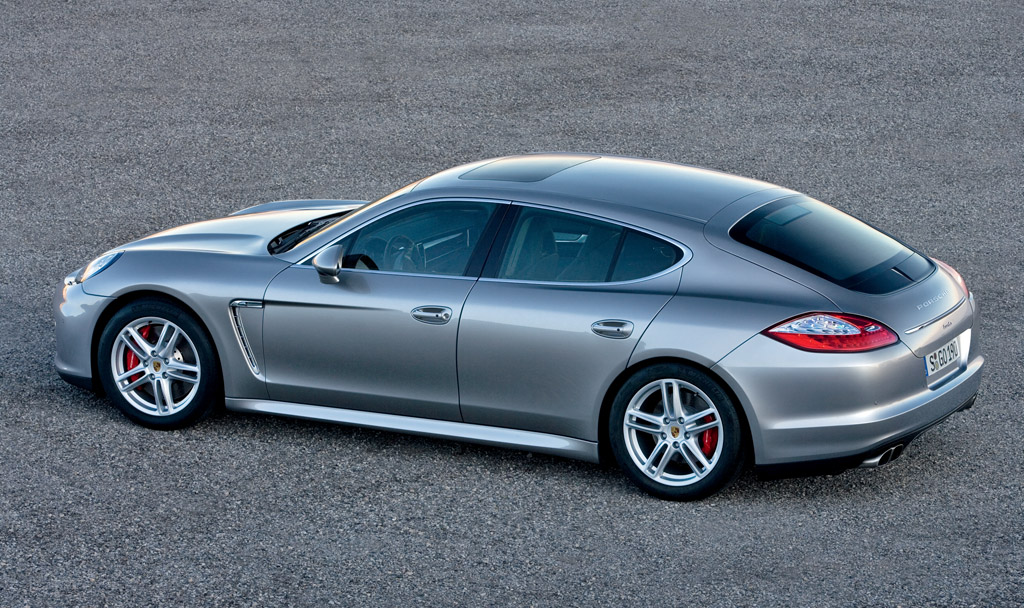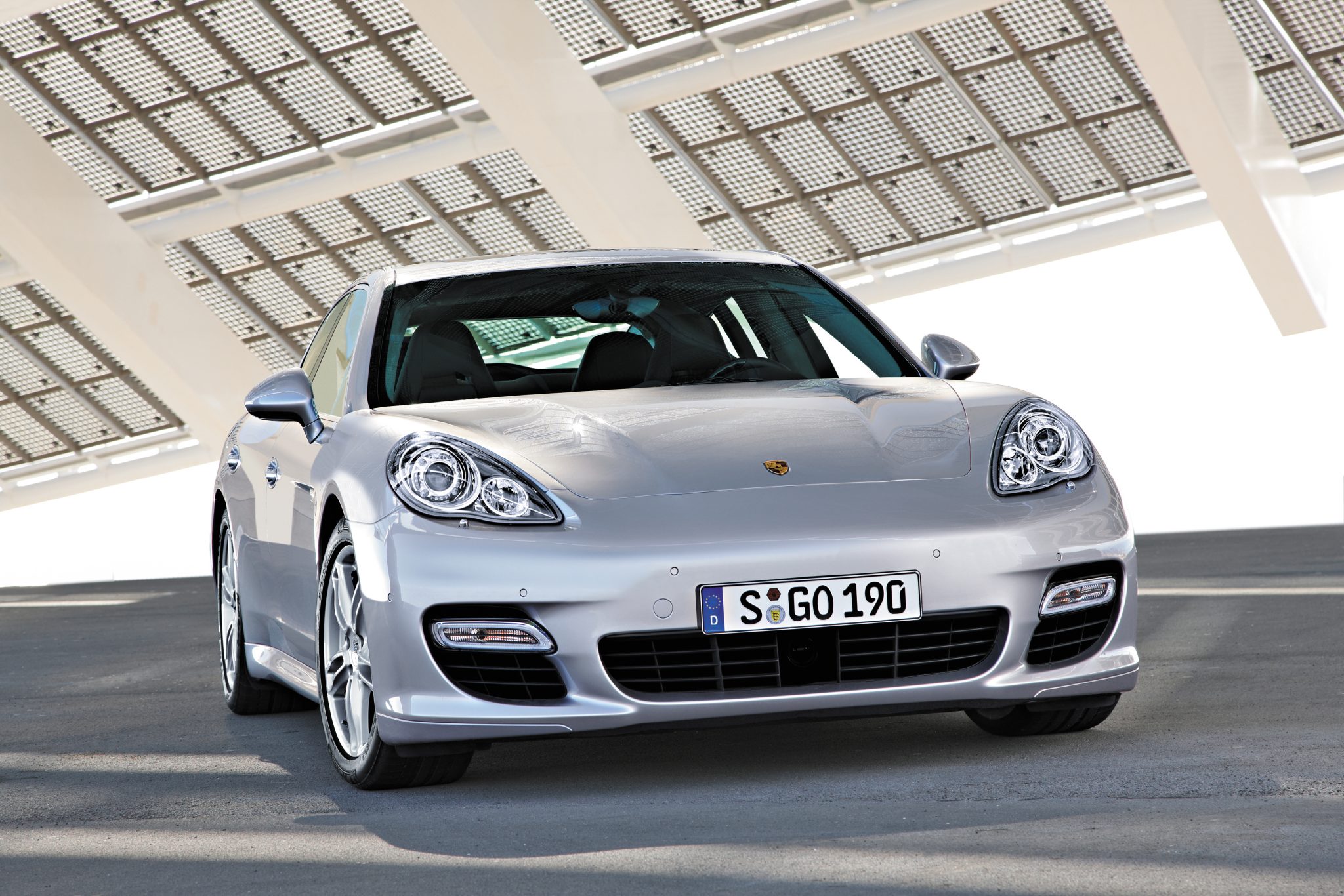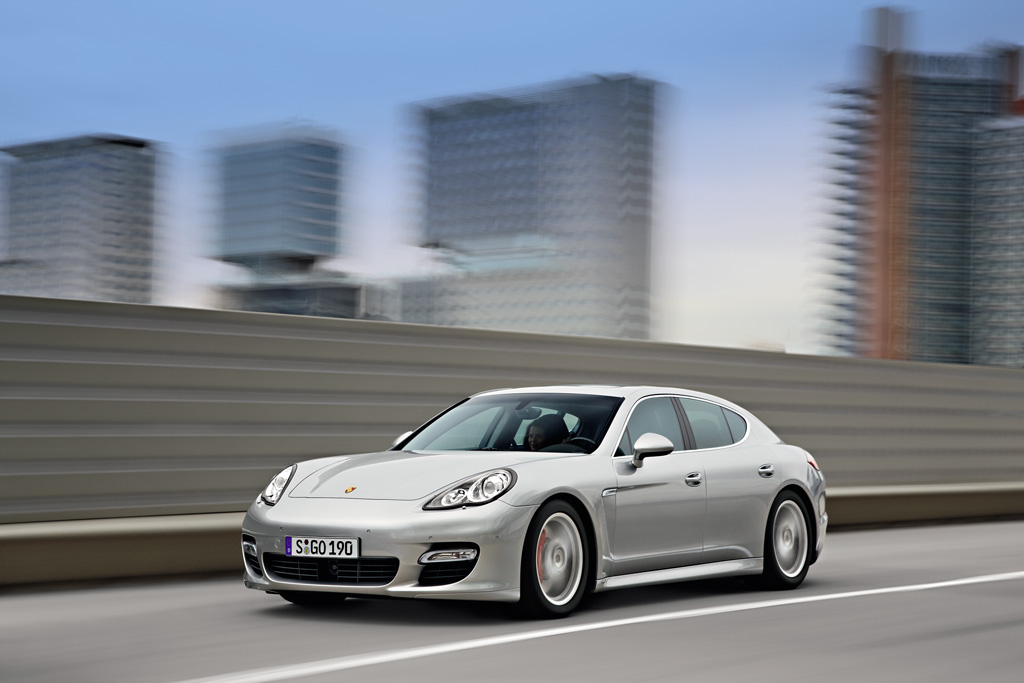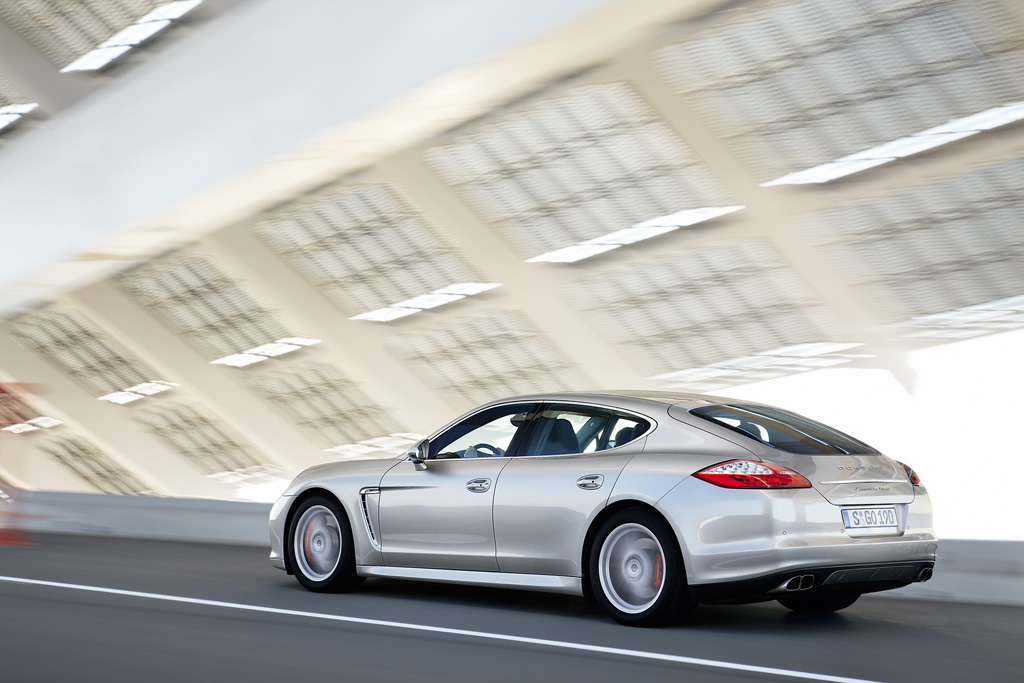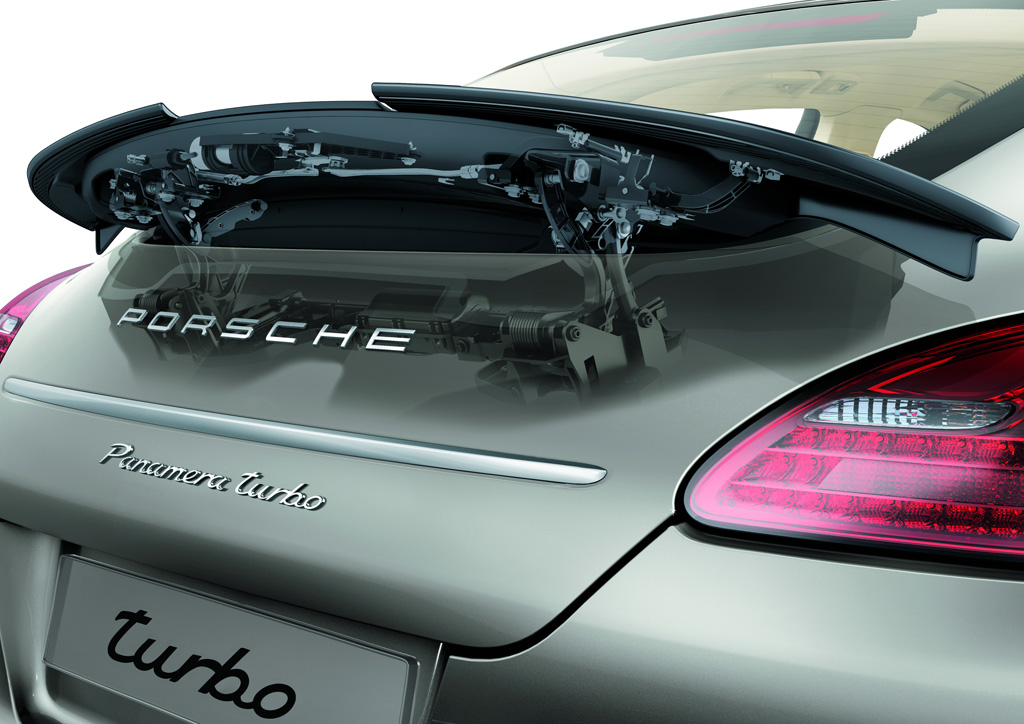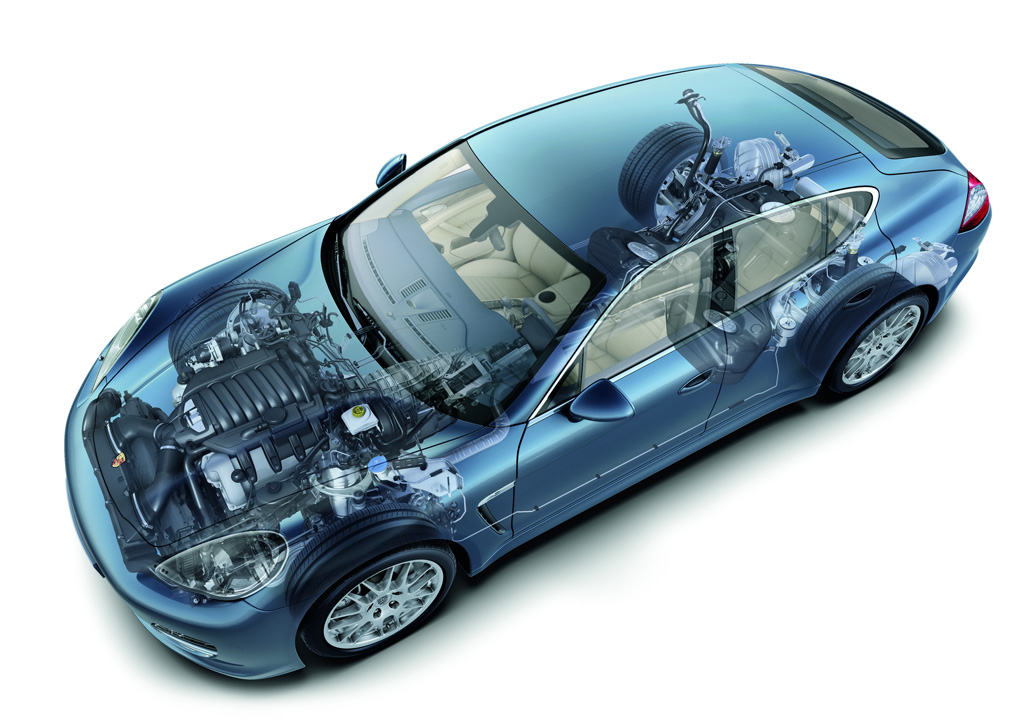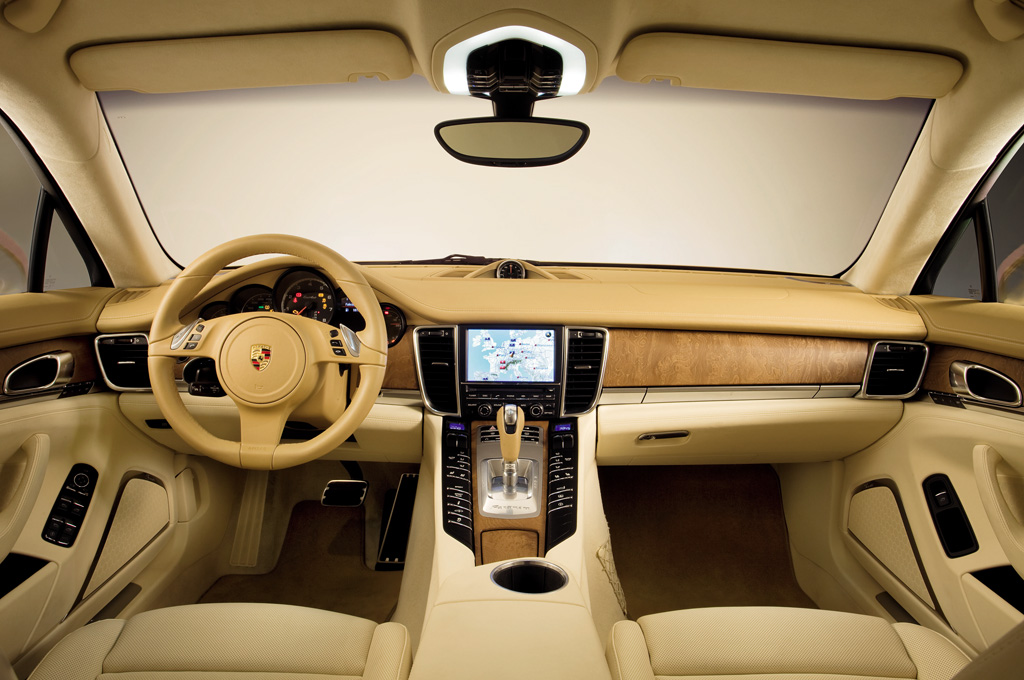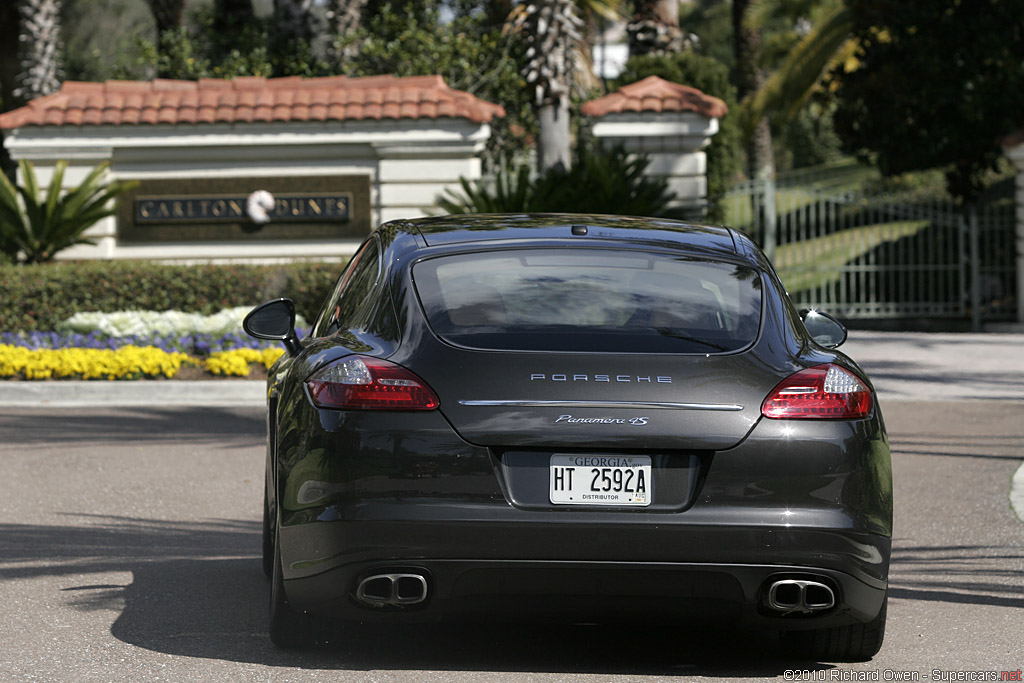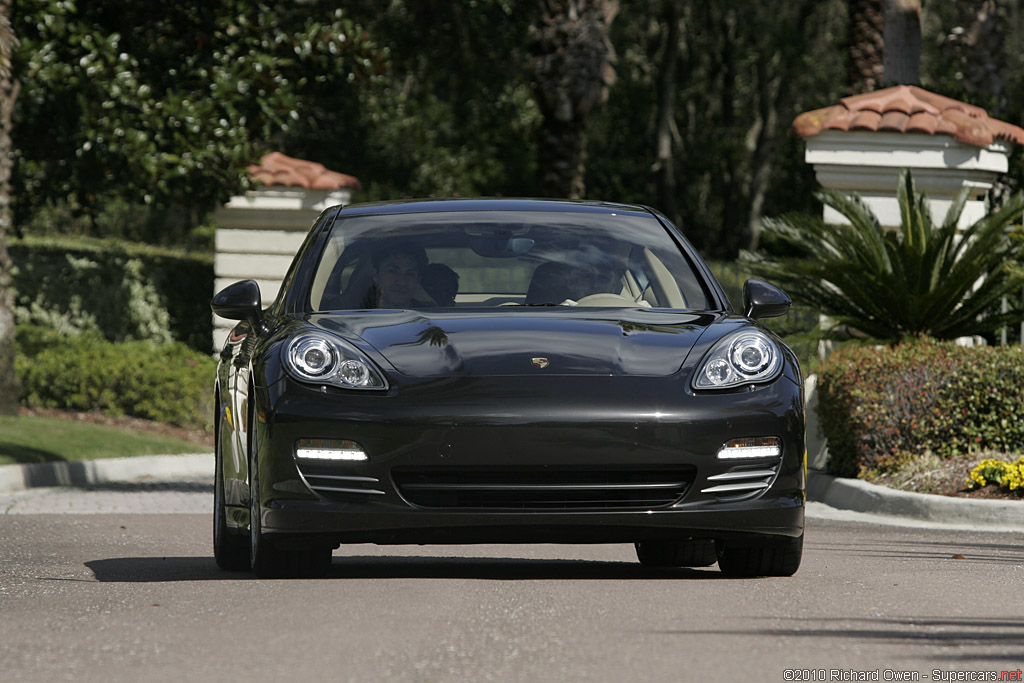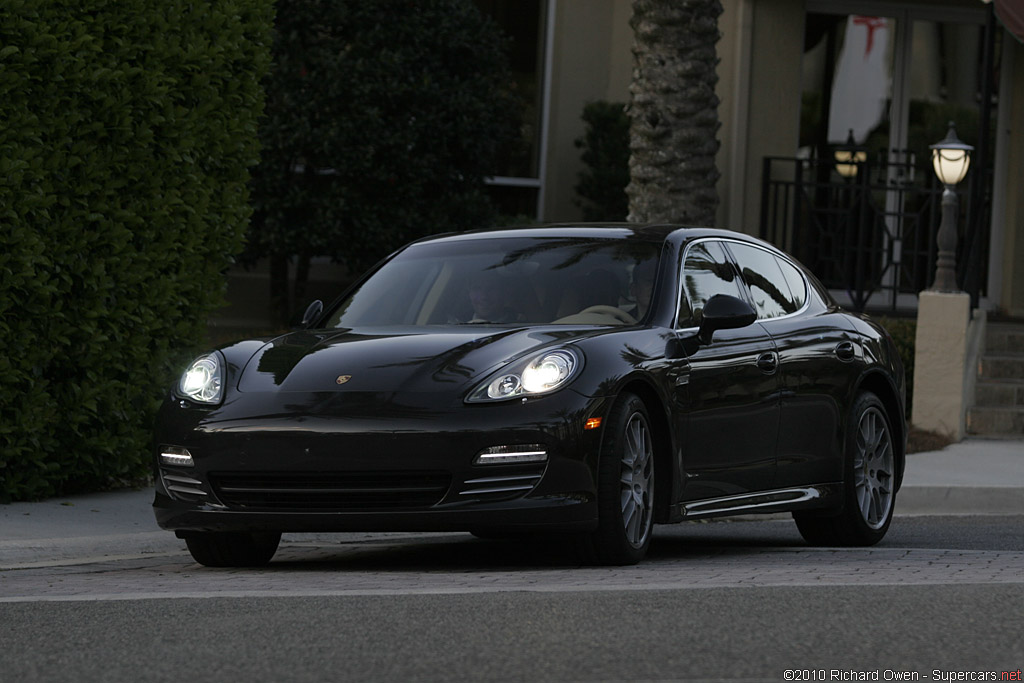2009 Porsche Panamera Turbo
2008/11/24 – Stuttgart. Roughly nine months before the actual market launch, Porsche has released the first official photos of the Panamera in its final look. In its design, profile and silhouette, Porsche’s unique four-seater stands out clearly as a new member of the Porsche family. Conceived and designed as a four-door grand touring sports car, the Panamera combines numerous talents in typical Porsche style: sporting driving dynamics, a generous and variable interior, and the supreme driving comfort of a Gran Turismo. Joining the 911, Boxster and Cayman sports cars as well as the sporty SUV Cayenne, the Panamera is Porsche’s fourth model series.
The designers of the Panamera have succeeded in positioning this unique car as a brand-new and truly different model while nevertheless retaining the looks of a typical Porsche. Through its proportions alone, the Panamera stands out clearly in its market segment: measuring 1931 millimetres or 76.0 inches in width, the Panamera is wider, and measuring 1418 millimetres or 55.8 inches in height, lower than comparable four-door models. The unmistakable, sleek GT silhouette is created by the car’s overall length of 4970 millimetres or 195.7 inches and short, sporting overhangs front and rear. In its styling and details, the Panamera follows the design philosophy refined over decades on the 911 and successfully implemented also on the Boxster, Cayman and Cayenne.
Through its design language alone, the Panamera will establish a new segment versus the competition. The symbiosis of sports car DNA derived from the looks of a coupé, the unique interpretation of the classical saloon body and the benefits of a variable space concept give the new Porsche its truly unmistakable appearance. As an example, the Panamera comes with highly individual, strongly contoured air intakes instead of a conventional radiator grille. Striking wheel arches and the long and sleek engine compartment lid create that typical 911 “landscape” at the front end of the car the Porsche customer has appreciated for no less than 45 years, with the distinctly contoured wings as flanks bordering on the flat front lid. The V-shaped seams along the engine compartment lid and the rear window tapering out like an arrow to the rear convey the features characteristic of a sports car to the new, highly individual Panamera class. The striking, muscular shoulders over the rear wheels, the dynamic sweep of the coupé-like roofline, and the visible tailpipes again bear out all the DNA so typical of a thoroughbred Porsche.
The elegant roof arch extends stylishly over the generous interior, simply begging the beholder to get inside. Like all Porsche models, the Panamera is oriented in every respect to the needs and wishes of the driver. But now, thanks to the new concept of space and the sporting architecture of the interior, the car’s occupants are also able to experience this special “pilot feeling” on all four seats. All four occupants enjoy supreme ergonomic comfort on both the front seats and the two firmly contoured single seats at the rear. The luggage compartment easily takes up all the passengers’ luggage. The variable space concept with its folding rear seat backrests enables the driver and passengers to adjust the luggage space individually to their personal requirements. And last but not least, the coupé tailgate in the sporting rear end combines superior suitability for daily use with stylish elegance.
Porsche has developed superior and up-to-date power units for the Panamera again reflecting all the qualities typical of the brand – the V-engines within the engine compartment come with six and eight cylinders and range in power from 300 to 500 bhp. Some of the engines use turbocharger technology, Direct Fuel Injection making them both fuel-efficient and powerful all in one. The flow of power to the wheels goes either through a manual six-speed gearbox or the new seven-speed Double-Clutch Gearbox, the so called Porsche-Doppelkupplung (PDK).
In addition to sporting rear-wheel drive, the top version of the Panamera comes with even more sophisticated all-wheel drive, which is also available for the other versions as an option. As a further highlight, Porsche is preparing a particularly fuel-efficient version of the Panamera with hybrid drive. Further details on the engines, transmissions, performance, prices and equipment will be disclosed next spring.
The Porsche Panamera will be built at Porsche’s Leipzig Plant, where a production hall measuring some 22,000 square metres or almost 237,000 square feet and a logistics centre are currently under construction. While the engines featured in the Panamera are built at Porsche’s Main Plant in Zuffenhausen, the painted bodyshells will be supplied by the Volkswagen Plant in Hanover. The Leipzig Plant will then assemble the Panamera for final delivery, with an annual sales target of some 20,000 units. Porsche is once again cooperating largely with German suppliers in the production of the Panamera, with some 70 per cent of the car’s overall value being created domestically. Hence, the Panamera is most definitely a car “Made in Germany”.
The Panamera will be making its world debut in spring 2009 and the first models will be at dealers worldwide in late summer of next year.
Story by Dr. Ing. h.c. F. Porsche AG
In Detail
| submitted by | Richard Owen |
| type | Series Production Car |
| built at | Leipzig, Germany |
| price $ | $ 132,600 |
| engine | 90º V8 |
| position | Front Longitudinal |
| aspiration | Twin Turbo |
| block material | Aluminum |
| valvetrain | DOHC, 4 Valves per Cyl w/VVT, Variable Intake |
| fuel feed | Direct Fuel injection |
| displacement | 4806 cc / 293.28 in³ |
| bore | 96 mm / 3.8 in |
| stroke | 83 mm / 3.3 in |
| compression | 10.5:1 |
| power | 372.9 kw / 500 bhp @ 6000 rpm |
| specific output | 104.04 bhp per litre |
| bhp/weight | 253.81 bhp per tonne |
| torque | 700 nm / 516.3 ft lbs @ 4500 rpm |
| redline | 6700 |
| body / frame | Unitary Steel Monocoque w/Steel and Aluminum Panels |
| driven wheels | RWD |
| wheel type | Cast Alloy |
| front tires | 255/45ZR-19 Michelin Pilot Sport |
| rear tires | 285/40ZR-19 Michelin Pilot Sport |
| front brakes | Ventilated Discs w/Vacuum Assist, ABS |
| f brake size | 38 x 390 mm / 1.5 x 15.4 in |
| rear brakes | Ventilated Discs w/Vacuum Assist, ABS |
| r brake size | 28 x 350 mm / 1.1 x 13.8 in |
| front wheels | F 48.3 x 22.9 cm / 19 x 9 in |
| rear wheels | R 48.3 x 25.4 cm / 19 x 10 in |
| steering | Rack & Pinion w/Variable Assist |
| f suspension | Aluminum Wishbones w/Adaptive Air Shocks, Electronic Dampers |
| r suspension | Aluminum Wishbones w/Adaptive Air Shocks, Electronic Dampers |
| curb weight | 1970 kg / 4340 lbs |
| weight distro | 52 % / 48 % |
| wheelbase | 2920 mm / 115.0 in |
| front track | 1656 mm / 65.2 in |
| rear track | 1646 mm / 64.8 in |
| length | 4970 mm / 195.7 in |
| width | 1931 mm / 76.0 in |
| height | 1418 mm / 55.8 in |
| transmission | 7-Speed Automatic |
| tran clutch | Porsche-Doppelkupplung (PDK) |
| gear ratios | 5.97:1, 3.31:1, 2.01:1, 1.37:1, 1.00:1, 0.81:1, 0.59:1 |
| final drive | 3.15:1 |
| top speed | ~303 kph / 188.16 mph |
| 0 – 60 mph | ~4.1 seconds |
| 0 – 100 mph | ~9.0 seconds |
| 0 – 1/4 mile | ~12.0 seconds |
| drag | 0.30 Cd |
| fuel econ epa | 12.2 L/100 km or 19.28 mpg-us |
| city fuel econ epa | 15.68 L/100 km or 15 mpg-us |
| hwy fuel econ epa | 10.23 L/100 km or 23 mpg-us |
| fuel capacity | 100 litres or 26.40 gal. |



